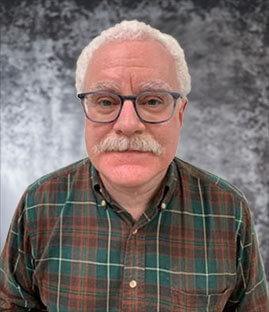The $20-billion-dollar augmented reality (AR) and virtual reality (VR) industries greatly value image. Consumers want AR/VR glasses that are compact and comfortable but deliver high-quality performance. They’re also looking for stylish optics for AR/VR glasses that don’t cause a “bug-eye” look.
To address this challenge, freeform optics and metasurfaces may be used.
Understanding Imaging Systems
Light comes through an optical system as rays or waves. These two perspectives are interchangeable in optics when the optical surface is much larger than the wavelength of light.
The wavefronts are perpendicular to the rays. In an ideal imaging system, all the rays originate from a single point on the plane. Then they are imaged to one point on the plane, which is similar to creating a spherical wavefront.
In practice, the surface for output light is not a perfect sphere for all the field points. This deviation is an optical aberration. These two optical devices enable manipulation of the output wavefronts of light, so they can be used to construct systems with high imaging performance – precisely what AR and VR need.2
What Are Freeform Optics?
Freeform optics is an emerging technology that features optical shapes or optical surfaces that are designed with little to no symmetry.2 Removing the symmetry enables an engineered phase wavefront response with different optical path lengths and allows manufacturers to create optical devices that are lighter and more compact.
Along with optics for AR/VR, infrared and military optical systems, 3D imaging, automotive and LED lighting, remote sensing, semiconductors, energy research, and medical technologies also utilize freeform optics.
What Are Metasurfaces and Metaform?
Optical metasurfaces are a viable solution to cumbersome optical elements. Metasurfaces offer a new way to manipulate light based on scattering from resonant nanostructures instead of conventional refraction and propagation.2
Customizable optical response of devices with minimal form factor is the pinnacle of optical design for imaging systems like AR/VR and 3D vision. Freeform optics and metasurfaces combined can address the needs of the emerging generation of optical systems.
Using Freeform Optics for AR/VR
AR and VR are rapidly growing technologies. As the communication and computation capabilities increase, these technologies are becoming the next-generation display platforms for human-digital connections.
The challenge with AR and VR is matching human vision performance while keeping the display module compact and lightweight.[3] Freeform optics have a freespace optical combiner to direct visible light into the eye, but when that combiner is part of the freeform optics that curve around the head, not all of the light goes into the eye.
Another challenge with optics for VR/AR is moving to the nanoscale. The focusing device is only 2.5 mm, which is still 10,000 times larger than the smallest nanostructure in a freeform optic.
To address this challenge, they had to change the freeform lens shape to distribute the nanostructures so they could work in harmony and deliver superior optical performance.
Optical Design for One Eye – AR Headset
For example, the optical design for one eye of an AR headset requires two freeform prisms – so a full headset uses four prisms. Light from the microdisplay is relayed to the eye through Prism A, while light from the real environment is transmitted through Prism B, then Prism A. The wearer then sees the microdisplay overlaid over the real scene from the environment.
The light path through Prism A is complex. Light must pass through the surface, then the beam undergoes total internal reflection at one surface, then reflects from another surface. This second surface is partially reflective. Finally, the microdisplay beam is transmitted back through the surface to reach the eye.
Prism A is usually the most complex freeform shape because it’s the only surface that doesn’t reflect reality. The high level of asymmetry along the vertical axis and short track length make this type of freeform surface inadequate to show a high-quality image from a microdisplay directly to the eye. This is why all three surfaces of Prism A must have freeform shapes.
Then Prism B is necessary to deliver an uninterrupted beam from the real environment to the eye. The surface on Prism B is a freeform shape that’s combined with a second freeform shape to adjust aberrations that are created by Prism A. This ensures that the “scene” doesn’t look skewed from the real environment.
Project Requirements
The requirements vary by project. For example, a head-up display with an instrument gauge in a car doesn’t need precise placement of the projected image over the real-world image. For other applications, such as gaming, the position of the projected image must be precisely controlled to provide the best experience. In either case, however, the projected image and the real-world image must be crisp and undistorted.
About Apollo Optical Systems
Apollo Optical Systems is a leader in optical design and manufacturing. We guide all of our design work by the principle that the best design comes from a thorough understanding of the problem and the physical and technological principles that drive an effective solution. We work with customers throughout the entire development cycle – design through manufacturing and assembly – to ensure success. Contact us today to get an estimate for your custom optical components!
Sources:
[1] https://www.rochester.edu/newscenter/a-new-way-to-make-ar-vr-glasses-476742/ [2] https://www.science.org/doi/10.1126/sciadv.abe5112 [3] https://www.nature.com/articles/s41377-021-00658-8
About Dale Buralli
Dr. Dale Buralli has served as the Chief Scientist for Apollo Optical Systems since 2003. In this role, Dr. Buralli is responsible for the design and optical modeling of various optical systems. These systems include virtual or augmented reality, ophthalmic and other imaging or illumination systems. Additionally, he provides support for optical tooling of lens molds and prototypes, including the development of custom software for both production and metrology. Dr. Buralli got his Ph.D. in optics from the University of Rochester in 1991. Now he is an Adjunct Professor of Optics at the University of Rochester’s Institute of Optics.


